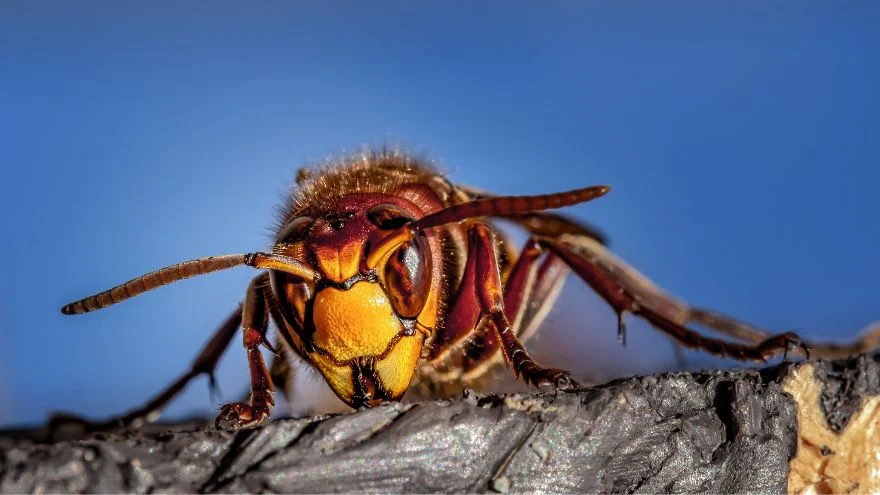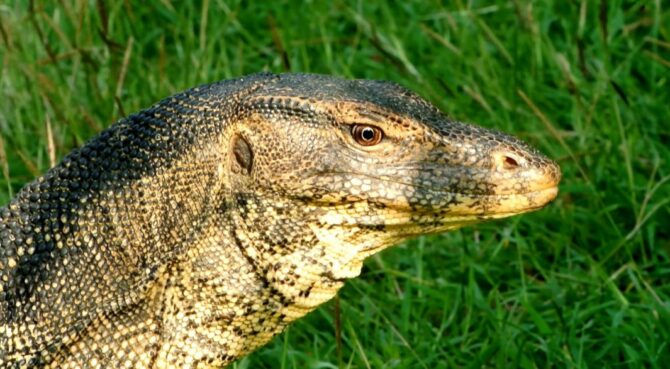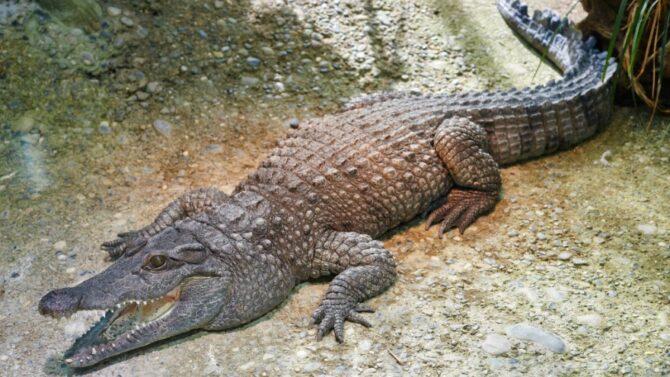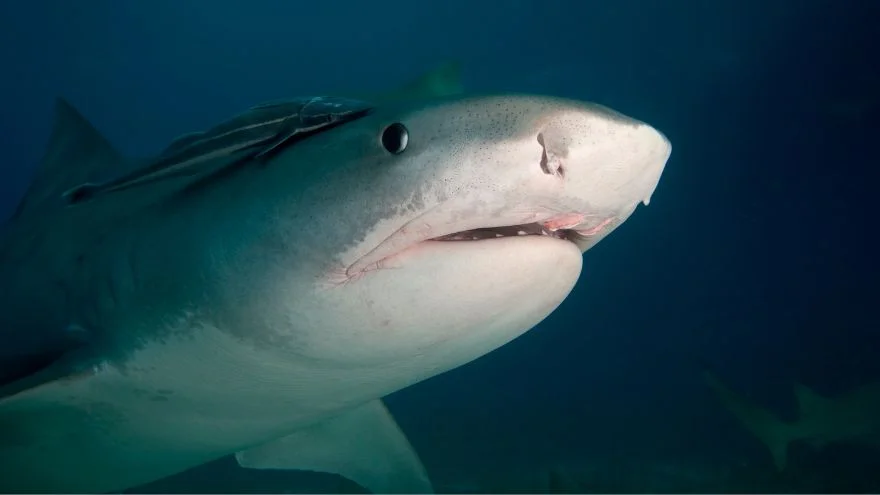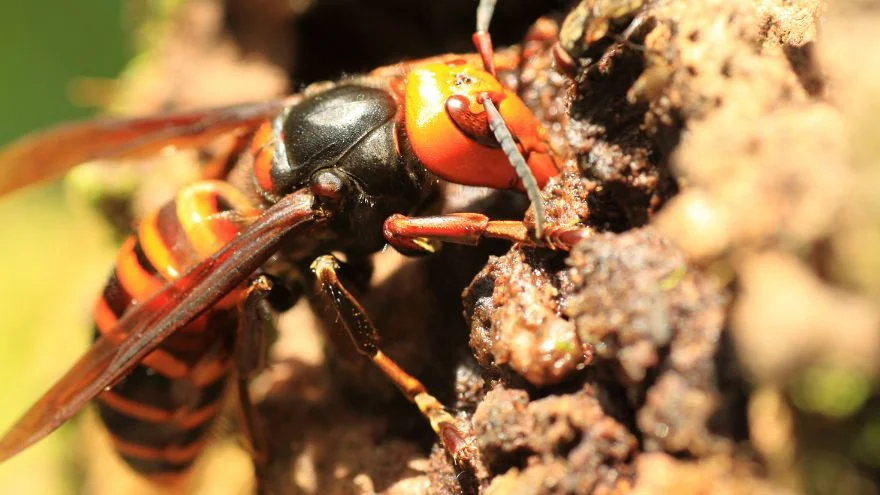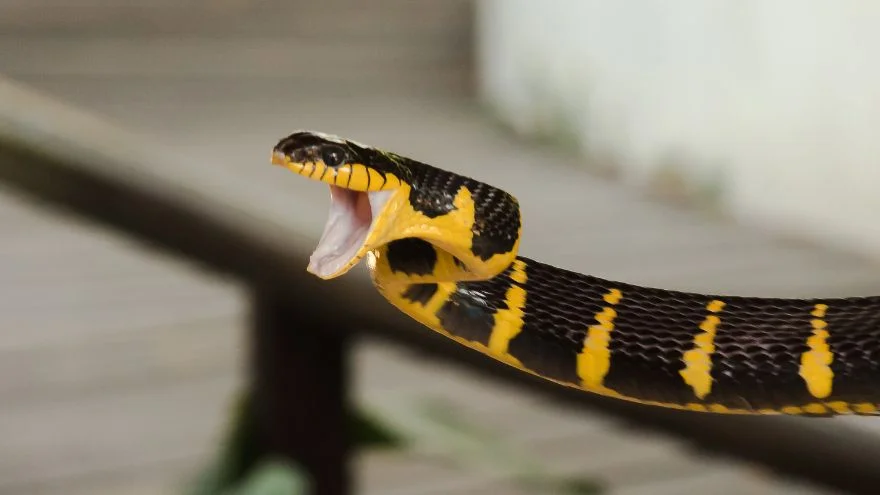Some of the most dangerous animals in South Korea include the giant Asian hornet, poisonous snakes, wild boars, etc. Hence, you must look out for these deadly animals as you explore the country’s terrains.
Thousands of travelers from around the globe travel to South Korea yearly due to its unique Asian culture, impressive Buddhist temples, delicious and healthy cuisine, and world-class city.
Aside from some of the world’s leading modern technologies and fantastic architecture, South Korea is also home to some of the most incredible kinds of animals.
However, some of these creatures are not only dangerous but also deadly.
This is why we have compiled the 12 deadliest animals in South Korea and some wildlife safety tips you should know.
What are the Most Dangerous Animals in South Korea?
1. Giant Asian Hornet
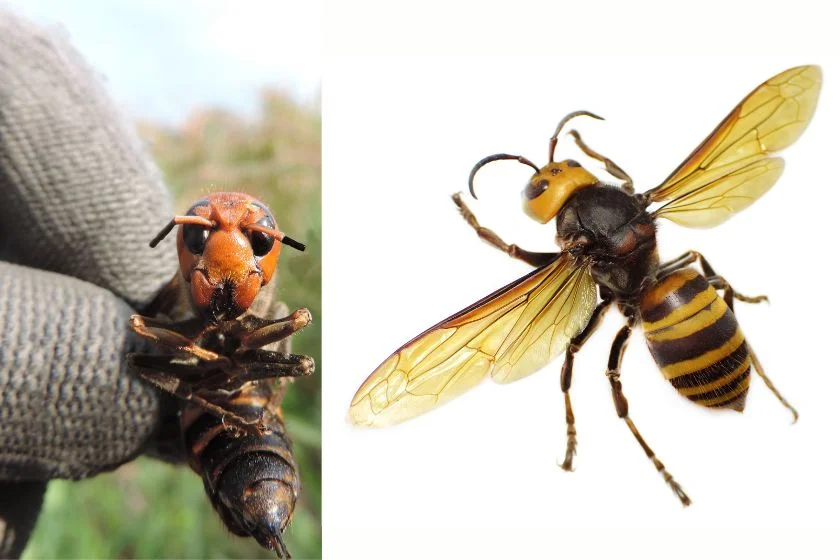
- Scientific name: Vespa mandarinia
- Classification: Insect
- Habitat: Dense woodland.
- Diet: Omnivore
- Conservation status: Near threatened
When talking about the most dangerous creatures in South Korea, there is no doubt that the Asian hornet tops the list.
Most people see these bugs as insignificant insects, but their might should not be taken for granted. These giant hornets mostly make their nest in the mountains of South Korea.
When threatened, they can be deadly as they tend to attack as a hive, making their presence quite threatening.
A single Asian hornet sting can inject an awful neurotoxin into the bloodstream of its prey. However, venom from one hornet sting cannot cause death or serious harm to a person.
Still, a sting from a hornet hive will inject the right amount of venom capable of causing paralysis and, in some cases, death to people not allergic to bee stings and even double the pain and agony to a person allergic.
Although there is only little that you can do to avoid an encounter with a hornet, when you come across a hornet’s nest, in such scenarios, the best thing to do is avoid it entirely because they can be very aggressive to trespassers and intruders.
2. Japanese Pit Viper (Mamushi)
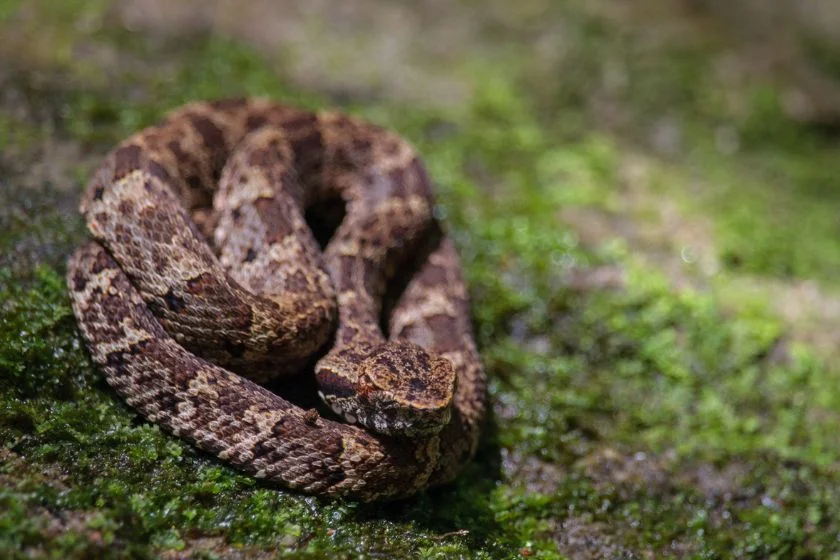
- Scientific name: Gloydius blomhoffii
- Classification: Reptile
- Habitat: Swamps, meadows, woodlands, rocky mountains, and marshes
- Diet: Omnivore
- Conservation status: Least concern
The Japanese pit viper, also known as the mamushi, is one of the most venomous snakes you will encounter in your travels to South Korea and is undoubtedly not a reptile you would want to mess with.
The mamushi has one of the most painful and venomous bites in the world, so it’s best to beware of them.
Its bite has been known to cause the following;
- Delusion
- Paralysis
- Stillbirth for a pregnant woman
- Organ failure and
- In some cases, death
However, these snakes are widespread, meaning there is an effective anti-venom if and when a bite occurs.
Therefore, the chances of you dying from a pit viper’s bite are meager, although you will need to receive proper medical attention for weeks before recovery in the hospital.
When exploring the wild, look out for this poisonous snake as it tends to sleep or lie and wait for its prey as it blends in with the environment.
3. Wild Boar
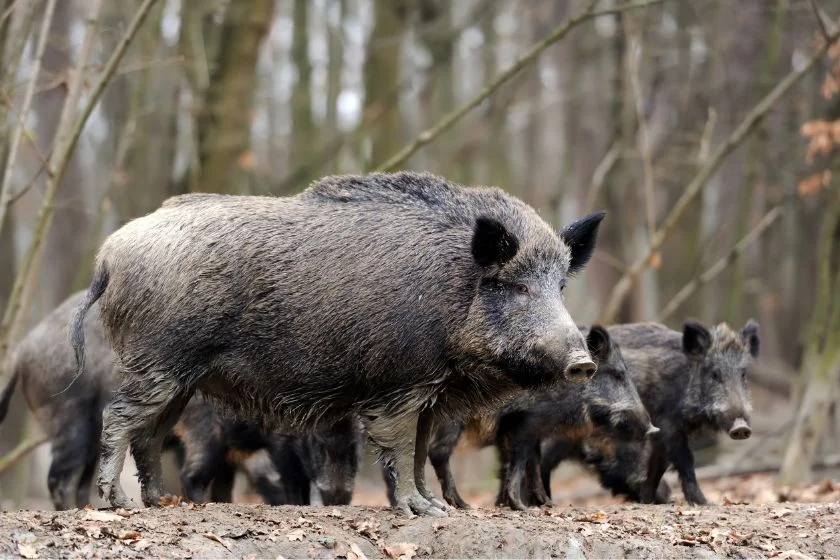
- Scientific name: Sus scrofa
- Classification: Mammal
- Habitat: Broad leaf forest, mountain
- Diet: Omnivore
- Conservation status: Least concern
Wild boars are mainly found in forests and mountains in and around South Korea, feeding primarily on a herbivorous diet.
Wild boars pose more threats if threatened, cornered, or even disturbed in their habitat, especially around their young ones.
However, a wild boar can move at a speed of about 25 miles per hour, meaning you can never outrun a boar, so it’s best not to bother these beasts.
As the wild boar population rapidly increases in South Korea, they tend to threaten and sometimes raid small villages and towns.
Sadly, when wild boars search the mountains of South Korea for food and find none, they are a massive threat to humans as they hurt and kill anything on their part to survive.
So, when moving to the mountains in South Korea, it is essential to note that when you see them, never make them feel threatened around you.
4. Tiger Keelback

- Scientific name: Rhabdophis tigrinus
- Classification: Reptile
- Habitat: Forest, flooded terrain, and ponds
- Diet: Carnivore
- Conservation status: Least concern
The tiger keelback, sometimes mistaken for the tiger snake, is a solitary animal and hardly goes far away from water sides.
They have chemical sensors; with these sensors, they search for food most of the day.
These snakes primarily get their toxin from digesting toxic toads.
When threatened, the tiger keelback bends its neck to show the nuchal gland (where the toxin gotten from the toad is stored), spraying the toxin in the mouth and face of the predator.
However, the only good thing about these snakes is that, although they are undoubtedly vicious and dangerous, it’s sometimes difficult to inject their venom into their victim.
Without eating a poisonous animal, they will not be able to spray toxins.
The fangs of the keelback snake are located at the back of its jaw, making it difficult but not impossible to inject its venom into its victim.
Effects of the keelback snake bite range from internal and external bleeding to death if not treated.
5. Ussuri Brown Bear

- Scientific name: Ursus arctos lasiotus
- Classification: Mammal
- Habitat: Forest and mountains
- Diet: Omnivore
- Conservation status: Least concern
The Ussuri brown bear is a sub-species of the brown bear. Being one of the largest bears, it is not a sub-specie of the grizzly bear in as much as it is called the black grizzly bear.
It looks like the Kamchatka brown bear and can occasionally match it in size.
The Ussuri brown bear and other species of bear have been responsible for many deaths and injuries in Asia.
An attack from this bear could be fatal. The females with cubs are less violent and more tolerant of human presence, but the adults are generally aggressive.
As much as possible, try and avoid the Ussuri brown bear while in South Korea.
6. Rock Mamushi
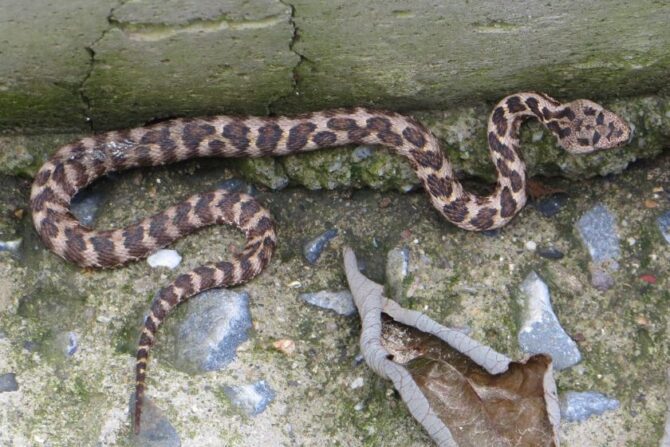
- Scientific name: Gloydius saxatilis
- Classification: Reptile
- Habitat: Mountains, forests
- Diet: Carnivore
- Conservation status: Least concern
The rock mamushi is a pit viper snake specie common to the Korean peninsula.
Unlike other vipers, the whitish line markings are absent on its body. It has a triangular head and a thick body with which it uses to coil itself on rocks.
Although an adult human is hardly vulnerable to the snake’s poison, it can still kill children.
Protect your kids, and don’t let them go near this snake. Fortunately, this snake specie makes its presence conspicuous by hissing loudly.
7. Urssuri Mamushi
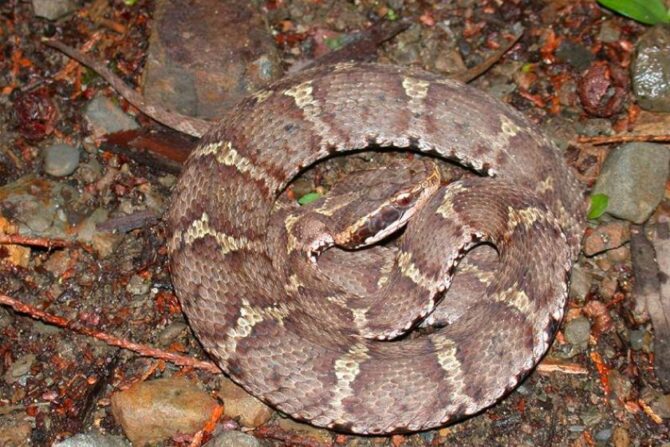
- Scientific name: Gloydius ursurriensis
- Classification: Reptile
- Habitat: Forests, rocks
- Diet: Carnivore
- Conservation status: Least concern
This is a specie of the venomous pit viper commonly found on the Korean peninsula with no sub-specie recognized.
The color pattern of this snake consists of a light brownish grey to a dark ground color. The length of an adult male varies from 37 to 63cm, while the females vary between 41 to 64.7cm in length.
Like many snakes in South Korea, this snake is hardly a threat to a grown human, but it is still dangerous to children.
Always monitor kids and prevent them from handling the snake if they see one. Its bite can kill a child.
8. Jellyfish
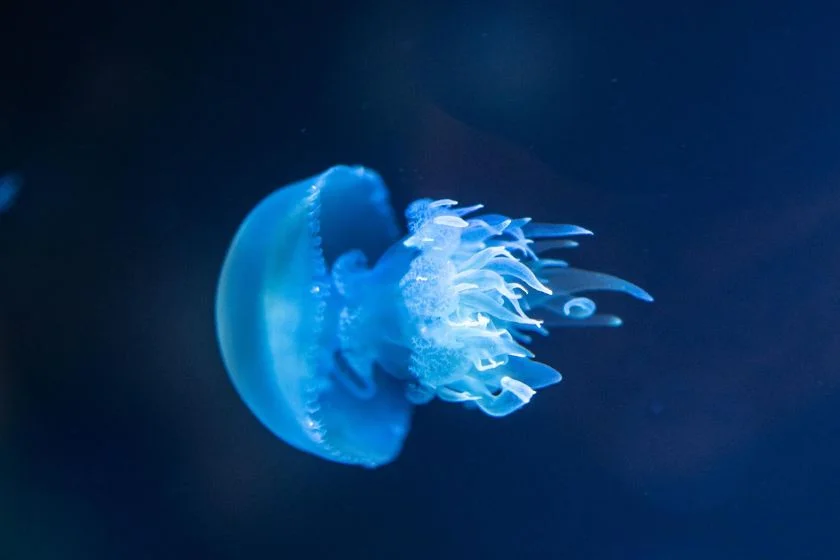
- Scientific name: Aurelia
- Classification: Scyphozoa
- Habitat: Coastal regions, deep oceans
- Diet: Carnivore
- Conservation status: Least concern
Jellyfish are notorious for stinging tentacles, which they use to capture prey and sting humans.
This animal is a nuisance for beach lovers in South Korea, with a population predominant along coastlines. Numerous jellyfish stings occur yearly.
Common symptoms of the jellyfish’s sting include; swelling, itching, stinging pain, and burning sensation.
Fortunately, jellyfish-destroying robots have been developed by researchers in South Korea. However, it would be best if you were cautious moving around on Korean beaches.
9. Pufferfish
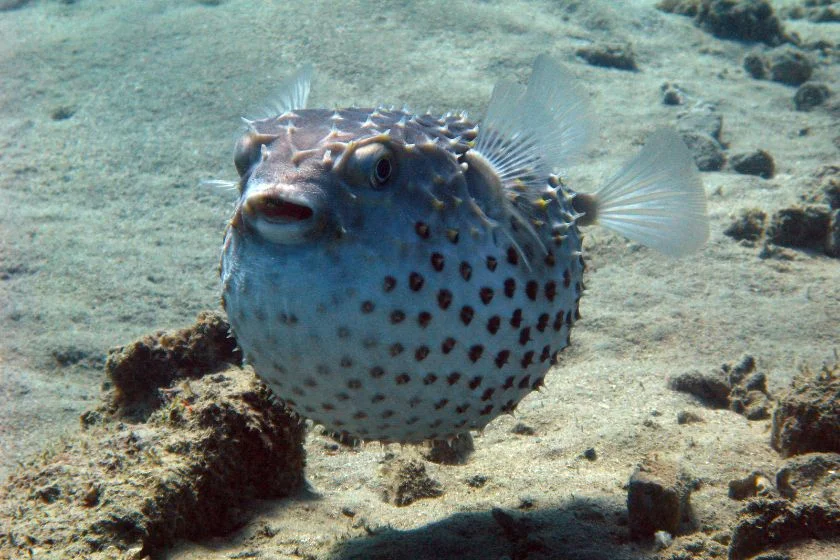
- Scientific name: Tetraodontidae
- Classification: Fish
- Habitat: Ocean waters, fresh waters, Estuaries
- Diet: Omnivore
- Conservation status: Least concern
This fish is renowned for being so poisonous and toxic. It is closely related to the porcupine fish and belongs to the same family as balloonfish, blowfish, puffer, sea squab, etc.
This fish is deadly and harmful to humans. It has spikes which it uses to threaten and inflict pain on predators and humans.
Also, when it is touched, it emits tetrodotoxin, a very harmful substance that is very dangerous for humans.
Because of this tetrodotoxin, this specie of fish is considered among the most venomous animals.
10. Mosquitoes
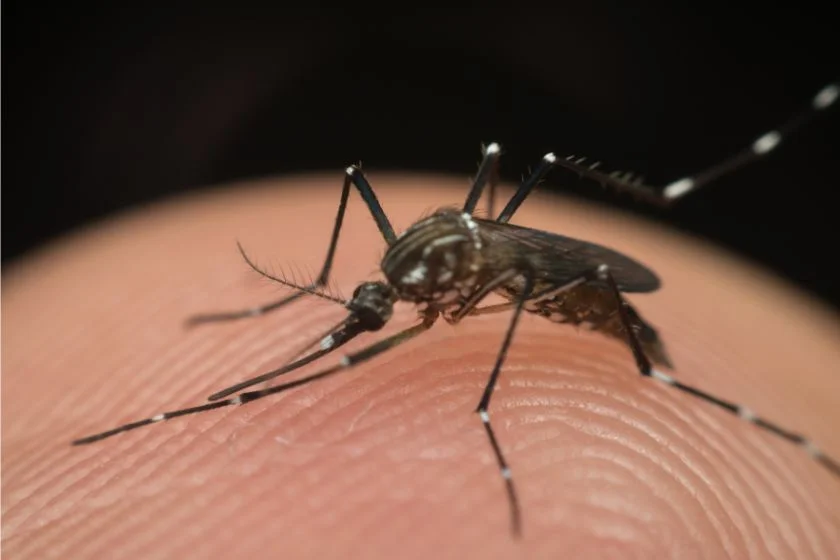
- Scientific name: Culicidae
- Classification: Insect
- Habitat: Forest, mashes, tall grass
- Diet: Parasite
- Conservation status: Least concern
Mosquitoes are insects you will undoubtedly encounter in South Korea or exploring its many forests and wildernesses.
They have segmented bodies, a pair of wings, and an elongated sharp mouth with their life cycle consisting of the egg, larva, pupa, and adult stage.
They have an irritating buzz, and their bite causes itching and discomfort.
Mosquitoes are also responsible for causing Zika, yellow fever, malaria, Dengue fever, etc., which is the cause of numerous yearly deaths.
Always take your mosquito repellent and net when traveling to South Korea.
11. Gray Wolf

- Scientific name: Canis lupus
- Classification: Mammal
- Habitat: Forests, mountains
- Diet: Carnivore
- Conservation status: Least concern
The gray wolf, or the wolf, is a canine species native to Eurasia and North America. It is a large specie in its family with many sub-species recognized.
Its less pointed ears and muzzle make them distinct from other Canis species. Wolves are renowned for their dramatic howling.
Though these wild dog species generally avoid humans, they are still unpredictable and can become aggressive if they feel threatened by your presence.
They can also harbor rabies with which they can infect humans. They are less likely to attack and avoid going close to their young.
Be very careful when exploring areas inhabited by wild animals in South Korea.
12. Banana Spider
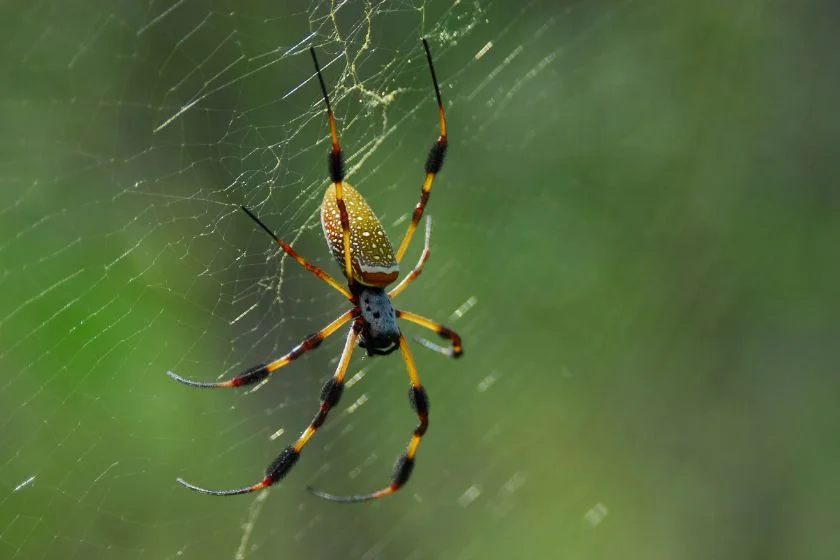
- Scientific name: Phoneutria
- Classification: Arachnid
- Habitat: Forests, crevices, gardens, termite molds, rocks, logs
- Diet: Carnivore
- Conservation status: Least concern
The banana spider is also called the Wandering spider. They wander around at night instead of remaining in their spun web.
They love to hide in logs and banana plants hence the name; banana spider. In defensive mode, they lift their bodies erect and sway from side to side.
These spiders are deadly; their bites are painful and cause many issues, including loss of strength, visual disturbances, speech impairment, rapid pulse, and cramps in the bite area. Their bites have also been known to kill children.
South Korea wildlife safety tips
To avoid becoming vulnerable to attacks or bites from the wildlife in South Korea, you must abide by certain do’s and don’ts.
- Do not approach animals, no matter their size: A lot of animals harbor deadly diseases and could become aggressive.
- Avoid feeding this wildlife: When you continuously feed the wildlife from your camp, they might start coming over more often, leading to wildlife management problems.
- Always secure your tent: If you are staying in your tenth, always zip it up before sleeping to avoid snakes, bugs, raccoons, squirrels, mosquitoes, and creepers from getting in.
- Animals are attracted to light: Ensure you switch off lights from your mobile phones or flashlight before sleeping. You wouldn’t want to wake up to wildlife swarming around you.
- Do not try to take any wildlife as your pet, no matter how lovely they look: Some of these animals can harbor diseases, and you and the people around you can get infected.
- Take pictures from a safe distance: A number of these animals are territorial. They might consider your presence as trespassing and might lash out. Avoid their young ones too.
Conclusion
The above-listed most dangerous animals in South Korea are not evil and should be treated with hatred and aggression.
They have their good side. However, most confrontations result from humans not understanding their nature.
They are important to the ecosystem. Therefore, their presence should be appreciated and respected.
